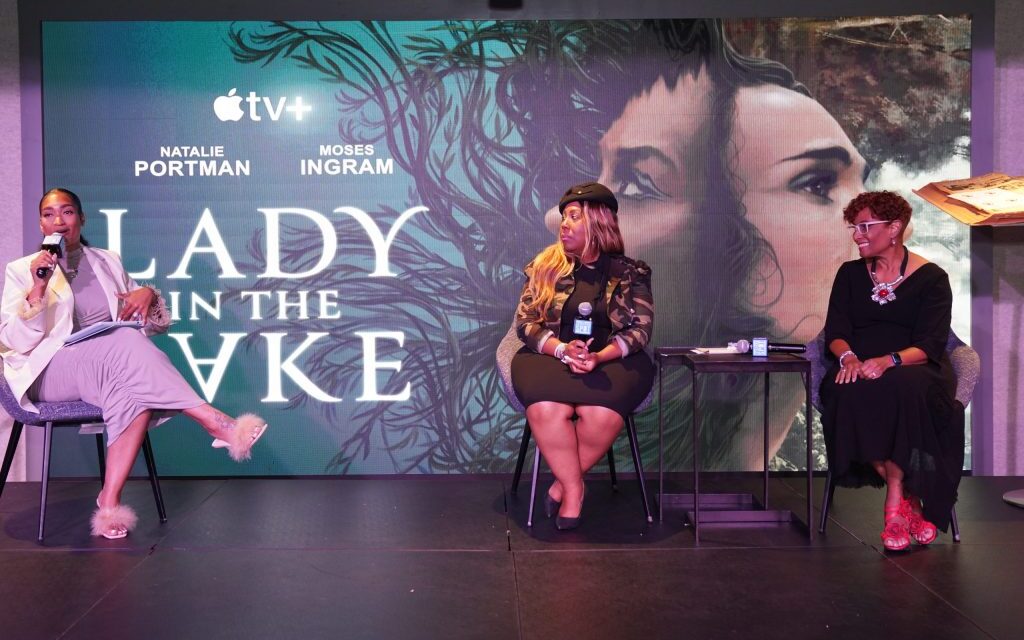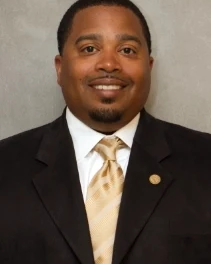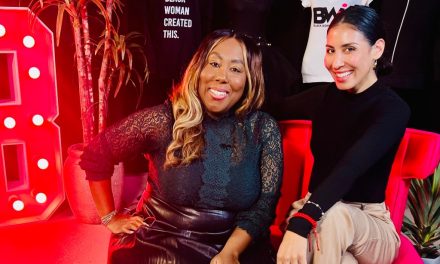By D. Kevin McNeir
Fact and fiction collide in the new series “Lady in the Lake,” now streaming on Apple TV+.
The dramatic mystery once again casts scrutiny on two deaths that took place in the city of Baltimore, captivating residents so many years ago.

(AFRO Photo / Patricia McDougall)
Shirley Parker was just 33-years-old when she disappeared on April 23, 1969. While the details surrounding her death are still unclear, one thing is for sure- on June 2, 1969 her body was discovered in the fountain of the Druid Hill Park Lake. Months later, another case– that of Esther Lebowitz– garnered even more attention. The young girl, only 11 at the time of her brutal death, was found deceased in West Baltimore, just days after she went missing in September.
While the new “Lady in the Lake” series shines light on both cases equally, years ago only one case– that of Lebowitz– was worthy of attention in larger, mainstream media outlets of the day. For Parker, the Baltimore AFRO was the only publication interested in her life, her status as a missing person and ultimately, her death. For months the publication kept her name in the headlines, deploying reporters and photographers to speak with witnesses and explore areas of interest.
Now, the publication’s current publisher and CEO, Dr. Frances “Toni” Draper, is weighing in on the show and implications regarding women in the workplace and the struggles they face as they strive to achieve their dreams.
The publisher traveled to D.C. on Aug. 7 to take part in a panel organized by Baltimore-based ONE/35 Agency and Apple TV+ . The event included a cocktail hour, followed by clips of the series and a moderated panel discussion on the show at The Gathering Spot in Northwest Washington, D.C.
The discussion included radio personality Persia Nicole, who served as moderator for the event, Dr. Vonnya Pettigrew, CEO and founder of Baltimore-based Root Branch Media Group, and Draper, with the latter two serving as panelists.
During the discussion, and with “Lady in the Lake” as a backdrop, the three women discussed differences and similarities between challenges faced by women in the 1960s, the era of the show, and the issues of today. They also considered the chasm that remains between the amount of obstacles faced and the number of opportunities available to women of color, compared to their White counterparts.
The conversation was crucial in examining the series, which follows Maddie Schwartz, a Jewish reporter portrayed by Natalie Portman, as she tries to bring White attention and outrage to the death of a Black woman, whose case is largely overshadowed by news of a missing Jewish child. Schwartz is forced to face a variety of obstacles– first because she is a woman, and secondly, because she is out of place as she seeks answers and validity as a hard-news reporter in a hostile White, male-run newsroom.
“During the 1960s, women had very few options. As we see in ‘Lady in the Lake,’ they could either stay home and be a housewife, or abandon their children and pursue their own dreams. But they couldn’t be both business owners and mothers,” Pettigrew said. “Before Congress passed The Fair Credit Act over 50 years ago, as a woman, I could not have purchased land along the Baltimore waterfront or been an independent business owner.
Draper spoke to the female examples of excellence in the newsroom within her own family.
“I was raised by strong women who saw the world in a lens that did not reflect how the majority of women of color perceived the world,” Draper said. “Fortunately, my grandfather raised his five daughters so they could become independent on their own strength and merit, regardless of their gender.”
Pettigrew, who recently broke new barriers by purchasing a 14,000 square-foot production house located along the Baltimore waterfront, said technology has made all the difference in her success as a woman in media because she is able to do things on her own terms.
“As a businesswoman in the digital age, I am what independent media looks like and because of technological advances, I am able to provide content on a much larger scale,” Pettigrew said. “When working with youth, I emphasize the importance of Blacks moving from being solely content consumers to expanding their horizons as content creators so that we control the narrative – our narrative.”
Draper agreed.
“The key to survival today is innovation,” Draper said. “The AFRO is no longer a newspaper – we are a media organization. And it’s more than just employing and mastering the latest technology – it’s about changing our mindset. We all know that AI is here but it cannot capture the essence of the Black community. It cannot tell our stories the way we can.”
Aside from the evolution in how stories are being told today, Draper commented on the power of the Black community– put on full display in the series.
“Contrary to what many believe, Blacks are not monolithic – and yet, we are still one community,” she said, adding with a chuckle, “and when you’re wrong, we will still call you out.”
“When I grew up, it didn’t matter what job you held – preacher, teacher, city worker – we all lived and remained in the same community,” Draper continued. “That was our strength. We knew each other and we trusted each other.”
As a result, stories like that of Shirley Parker, are on record, making the series “Lady in the Lake” possible decades later– thanks to the hard work of the AFRO journalists, photographers and editors of the year 1969. Draper said the community is what keeps the publication going and recording more Black stories.
“We have to support Black-owned media– not just Black media personalities,” Draper said. “We are businesses that provide essential services to our own communities and we need your support so we can continue in that centuries-old commitment.”
The post AFRO publisher weighs in on ‘Lady in the Lake,’ challenges still facing women in the workplace appeared first on AFRO American Newspapers.











